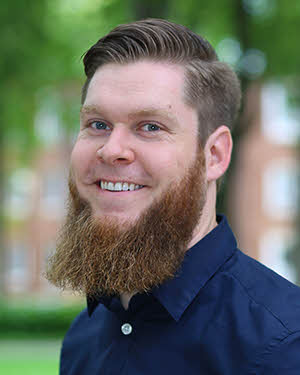Make a donation for Giving Tuesday and have your gift doubled! Give now
Philipp Gollner
Professor of US History
- Phone
Make a donation for Giving Tuesday and have your gift doubled! Give now

Faculty

Professor of US History
Education
Research Projects
Good White Christians: How Immigrant Religion Made Racial Privilege in America – book manuscript in progress
“A historian of religion in North America tells the story of a recent conversation with a business owner in Lancaster County, Pennsylvania, who employs six men. “Three are Amish,” the business owner said. “And three white guys.” Whatever the context here: this off-the-cuff remark suggests that there are situations in which contemporary racial binaries have no foundation other than religious practices. After all, we often assume – correctly and sadly so – that in North America, skin pigmentation determines a human’s social, cultural, and economic privilege. But members of the Amish church have entirely pale skin. So how can they be non-white, even if only to one business owner?
More importantly: why does no one make a similar distinction between white Americans and religious communities with comparable immigration stories as well as skin pigmentation – mainline Mennonites of Swiss descent, evangelicals with Swedish and Norwegian names, liberal Protestants from German stock for example? The picture gets even more messy when the America religious descendants of such groups today are understandably concerned about the kind of privilege their status as good, white Protestants affords them.
I attempt to shed new light on how religion shaped this interplay between race and power that still weighs on America. I draw mostly on Chicago’s religious and immigrant life between 1885, the year Josiah Strong published his Protestant nationalist manifesto Our Country, and the outbreak of World War I. Based on foreign-language sources, my project tracks the ways in which these immigrants shaped their racial credentials through religious encounters with America’s Anglo-Protestant activist scene – its social-gospelers, revivalists, and home missionaries – and through defining themselves over against others – passive, quietist, tribal religious groups. I argue that various well-meaning immigrant religious groups harnessed the cultural capital and coercive power of white Protestantism by adopting a posture of restless cultural activism and missionary zeal, as well as a view of ethnic boundaries as harmful to proper religion.
Religion, then, outlined racial spaces, not just the other way around. And “white religion” in America as we know it today is not simply an afterthought of racial binaries, but a fundamentally spiritual construct – never simply Anglo-Saxon, nor always American-born. With this framework in mind, I am interested in how immigrants used activist religious postures to shape racial status and cultural privilege.
My interest extends to the present: despite the contributions of their busy, world-bettering activism to the vitality of religious life in America, the immigrant religious groups I am interested in probably lost what could be a considerable gift to a culture still fraught with racial tensions: the instinct of ethnoreligious minorities that declined to exploit the advantages of their skin pigmentation, but opted instead for “wise provincialism” – a position on the sidelines of dominant culture.”
(This book began as a dissertation at the University of Notre Dame History Dept, Committee: Mark A. Noll, Thomas A. Tweed, Rebecca Tinio McKenna, Darren Dochuk)
BOOKS
Good White Christians: How Immigrant Religion Made Racial Privilege in America –Manuscript in progress
SCHOLARLY ARTICLES
“’Evangelize-Americanize:’ White Religion and Chicago’s Immigrants, 1884-1889.” American Studies (forthcoming, Spring 2017)
“How Mennonites Became White: Religious Activism, Cultural Power and the City.” Mennonite Quarterly Review 90 (April 2016): 51
BOOK REVIEWS
Review of Janis Thiessen, Not Talking Union: An Oral History of North American Mennonites and Labour, in Conrad Grebel Review (forthcoming)
Review of Elizabeth Gritter, River of Hope: Black Politics and the Memphis Freedom Movement, 1865-1954, in H-SHGAPE, H-Net Reviews, November, 2014. URL: https://www.h-net.org/reviews/showrev.php?id=41924
Review of John D. Carlson and Jonathan H. Ebel, eds., From Jeremiad to Jihad: Religion, Violence and America, in Journal of Multilingual and Multicultural Development, Vol. 35 (6/2014).
Review of Jared S. Burkholder and David C. Cramer, eds., The Activist Impulse: Conversations on the Intersection of Anabaptism and Evangelicalism, in Mennonite Quarterly Review 87, No. 2 (April 2013): 265-267.
Review of David R. Swartz, Moral Minority: The Evangelical Left in an Age of Conservatism, for the American Society of Church History blog, February 2 2013. http://www.churchhistory.org/blogs/blog/david-schwartzs-moral-minority
PUBLIC HISTORY
“It’s Good to Be Nobody: Beyond the Spiritual Rat Race Lies the Promise of a Marginal Community,” Mennonite World Review, June 8 2015.
“The Blessings and Embarrassments of Tribalism,” Mennonite World Review, July 22 2013.
Speaking